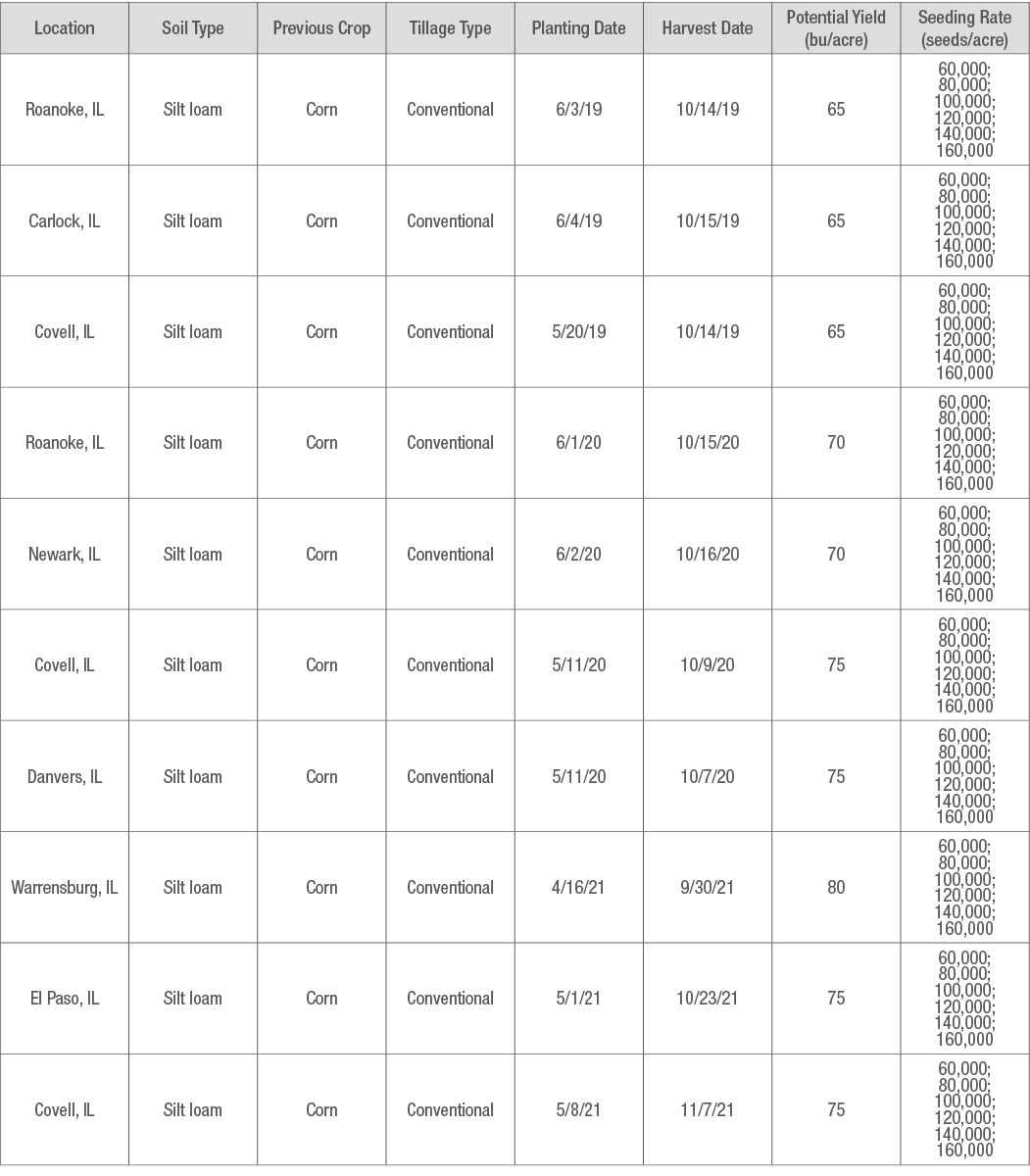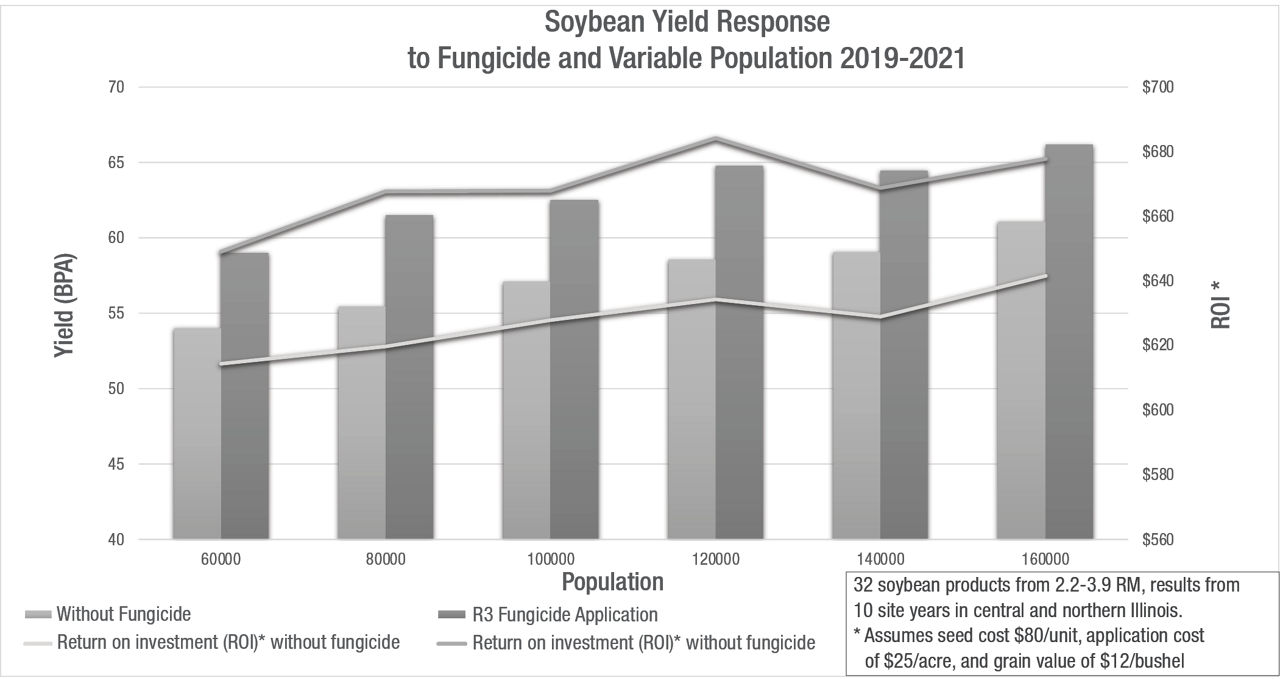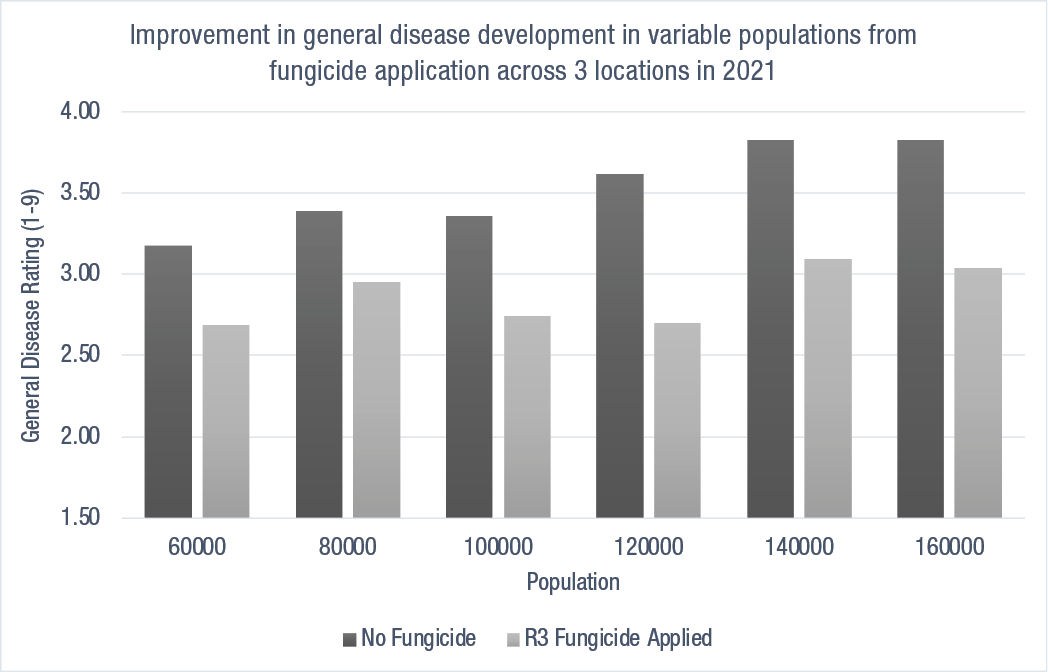10 MIN READ
How Planting Rate and Fungicide Application Affect Yield and Agronomic Characteristics in Soybeans
January 3, 2022
Trial Objective
Improvements in soybean genetics, planting technology, and weed control systems have led to lower planting rate recommendations for soybean growers over the past decade.1
Fungicide use in soybeans is steadily increasing.2
Some growers may wonder if fungicide is more beneficial in higher populations, which have a higher potential for disease development or vice versa.3
The goal of this research was to determine how planting rate and fungicide application interact and affect yield and disease development in soybeans.
Experiment/Trial Design
This research was conducted at Bayer Crop Science FOCUS sites in Illinois counties, Kendall, Woodford, McLean, and Macon from 2019 - 2021.
32 soybean products from 2.2-3.9 maturity group (MG) were planted, with different products used at different locations and in different years.
All seed was treated with Acceleron® Seed Applied Solutions STANDARD and ILeVO® Seed Treatment.
Seeding rates ranged from 60,000 to 160,000 planted seeds per acre.
Four replications of this trial were planted at each location.
Fungicide applied varied by location and trial year. All fungicides were applied at the R3 growth stage.
Standard fertility and weed management practices were followed.
The 2019 growing season was very cool and wet through early June, leading to delayed planting for many growers. Hot and dry conditions were prevalent in July and August, and excessive rainfall returned in September and October.
In both 2020 and 2021, there was sufficient moisture in the early part of the growing season, but very dry conditions throughout August and into September.

Understanding the Results
On average, across populations in the 3 years in this research, fungicide application provided an average yield increase of over 5 bushels and delivered additional profit of $41.47 per acre (Figure 1).
The most profitable configuration was a planting rate of 120,000 seeds/acre combined with an R3 fungicide application (Figure 1).
Without a fungicide application, a seeding rate of 160,000 seeds/acre was required for maximum yield and profitability potential. This rate provided $42.60 less income per acre than the 120,000 rate with fungicide applied (Figure 1).
Disease pressure was also fairly low in this trial. Overall, fungicide application helped reduce disease development by around 20% based on general disease ratings (Figure 2). This rating incorporates both disease incidence and severity, with a rating of 1 indicating no disease, and 9 being worst.


Key Learnings
Higher populations can lead to increased yield potential but may also increase the risk of disease development.
The results of this study show that fungicide application at the R3 growth stage resulted in an increase in yield potential across planting populations, even when disease pressure was not high. Understanding how these benefits help contribute to return on investment is beneficial to help growers get the most out of soybean products.
In this study, planting soybeans at populations of 120,000 to 160,000 seeds/acre combined with the use of a foliar fungicide at R3 should be considered to help maximize both yield and profit potential.
Sources:
1Pedersen, P. Optimum plant population in Iowa. Iowa State University. https://crops.extension.iastate.edu/files/article/OptimumPlantPop_000.pdf
2Geisler, L.J., and Miller, J.J. 2017. Managing foliar diseases in soybean. Nebraska Extension. https://extensionpublications.unl.edu/assets/html/g1862/build/g1862.htm
3Porter, S. 2019. Five reasons to stop your higher soybean population. Illinois Soy Advisor. https://www.ilsoyadvisor.com/on-farm/ilsoyadvisor/5-reasons-stop-your-higher-soybean-population
3003_R1_21